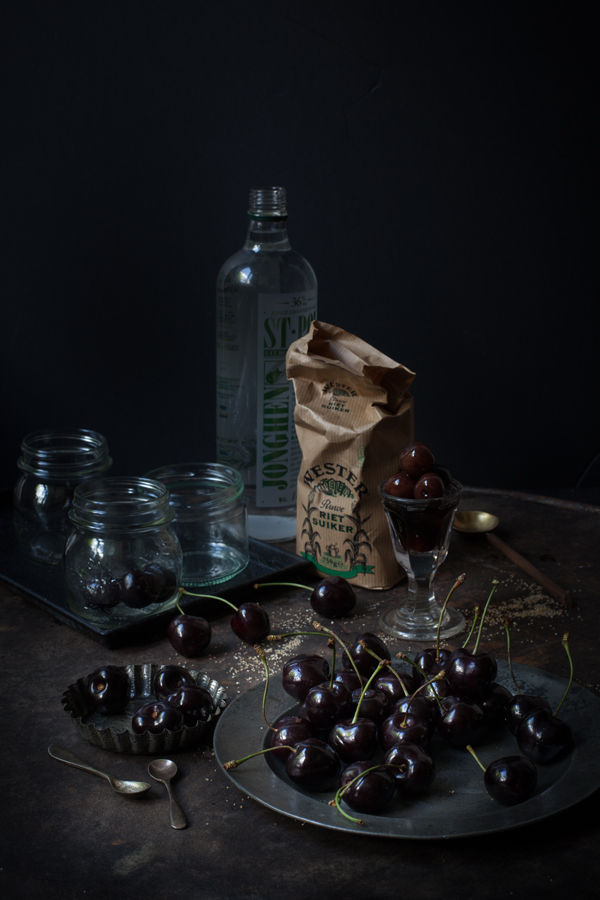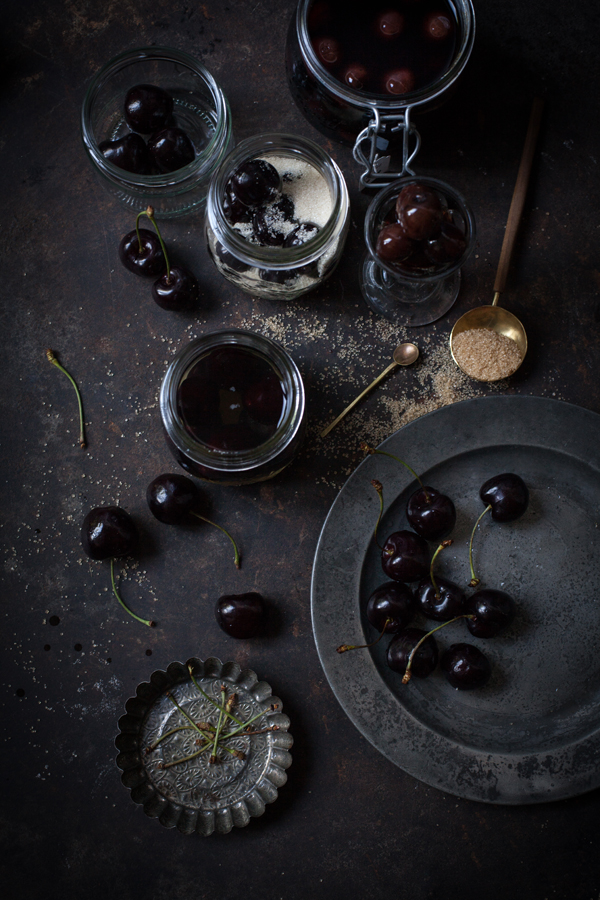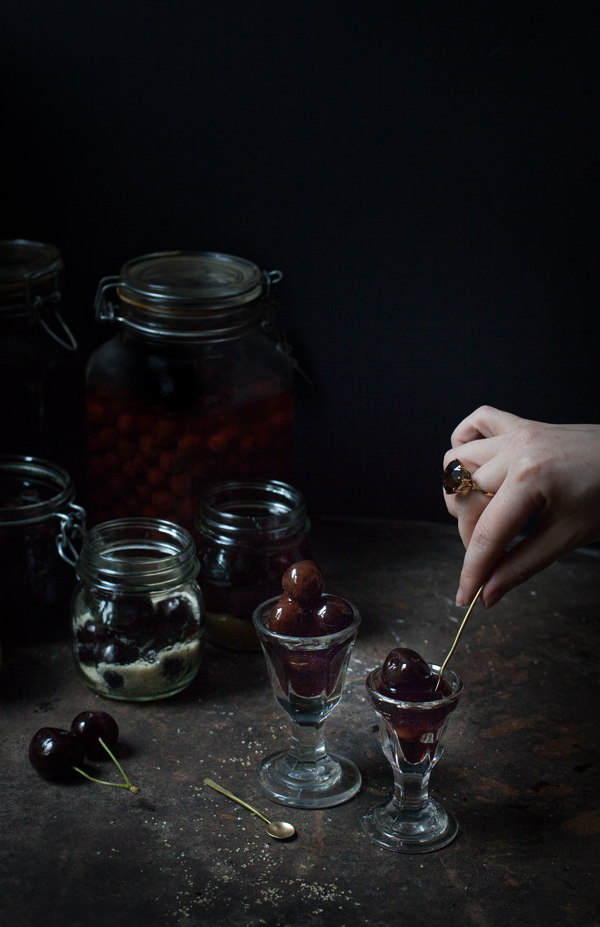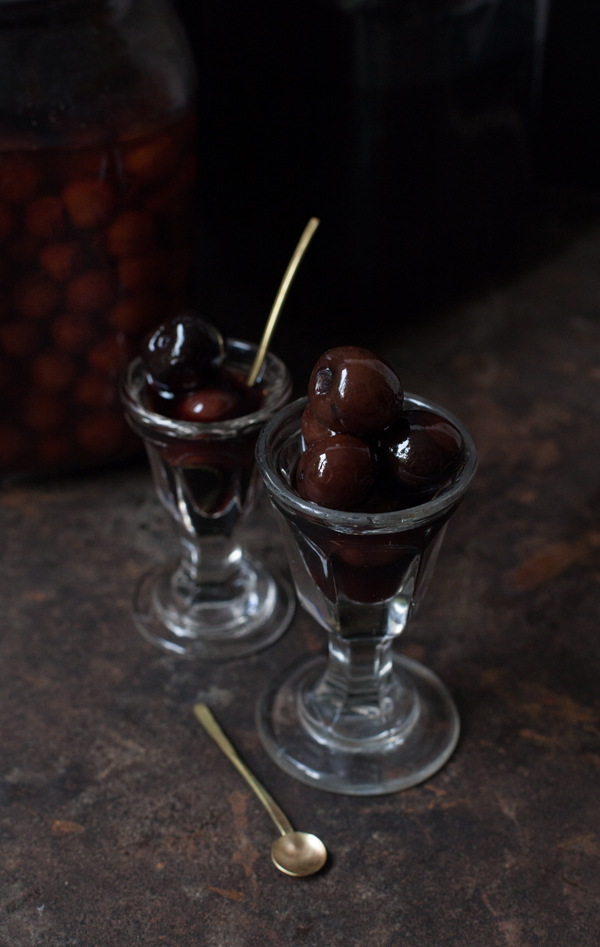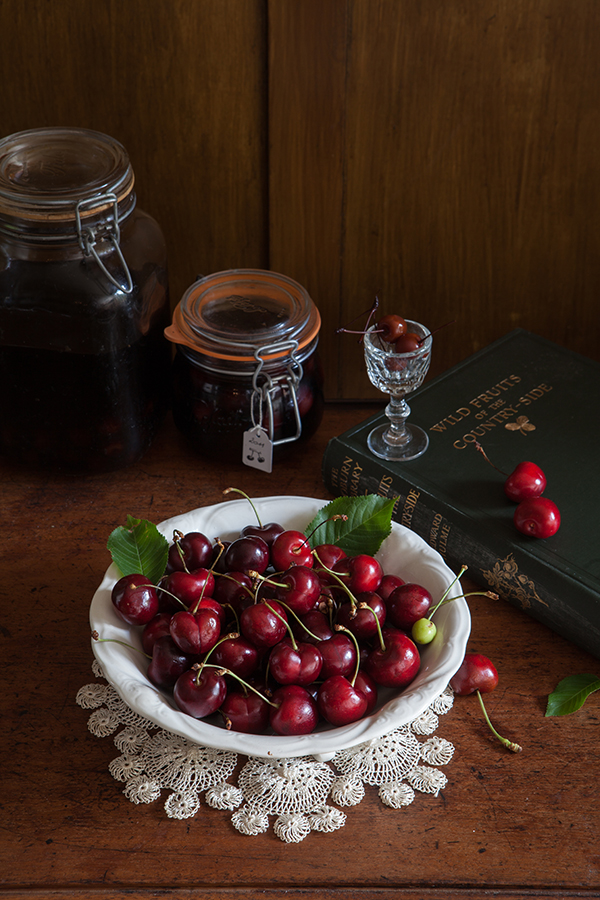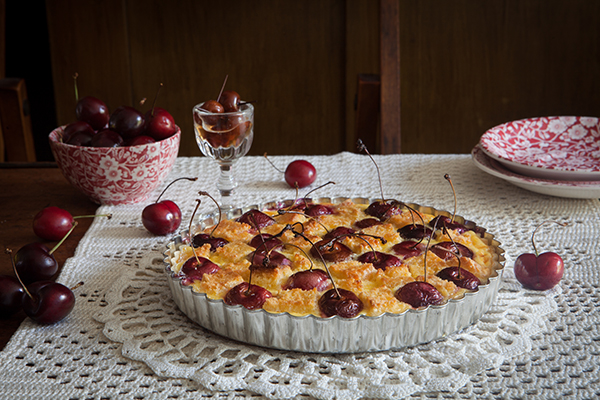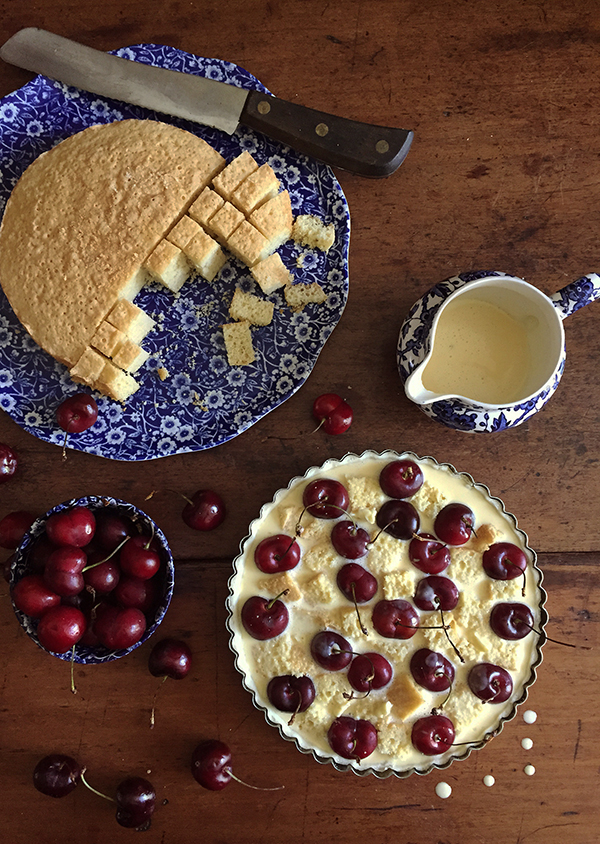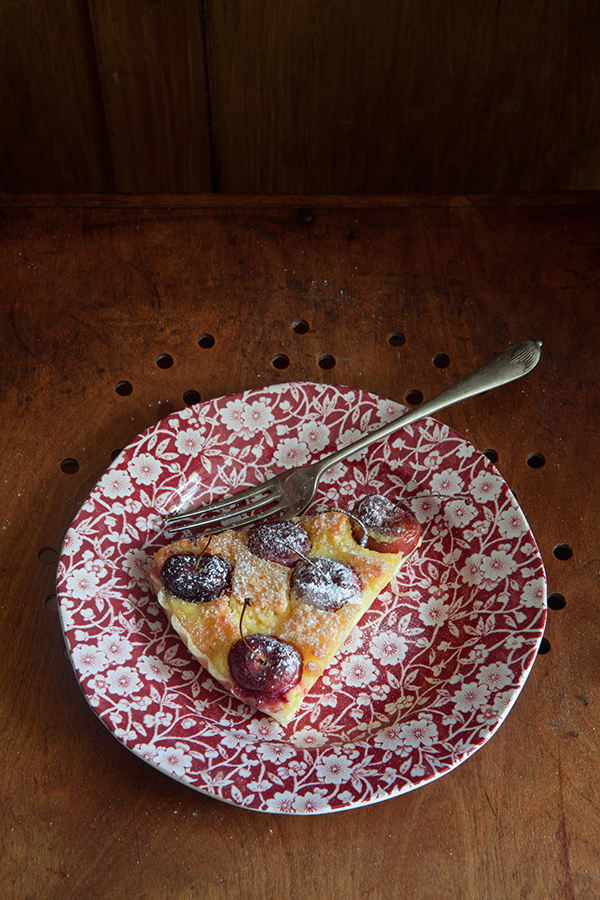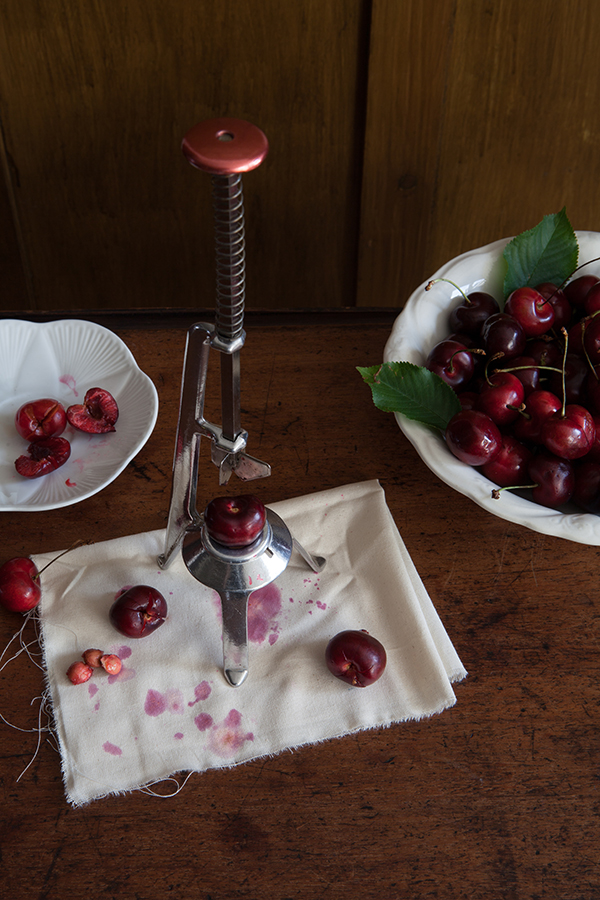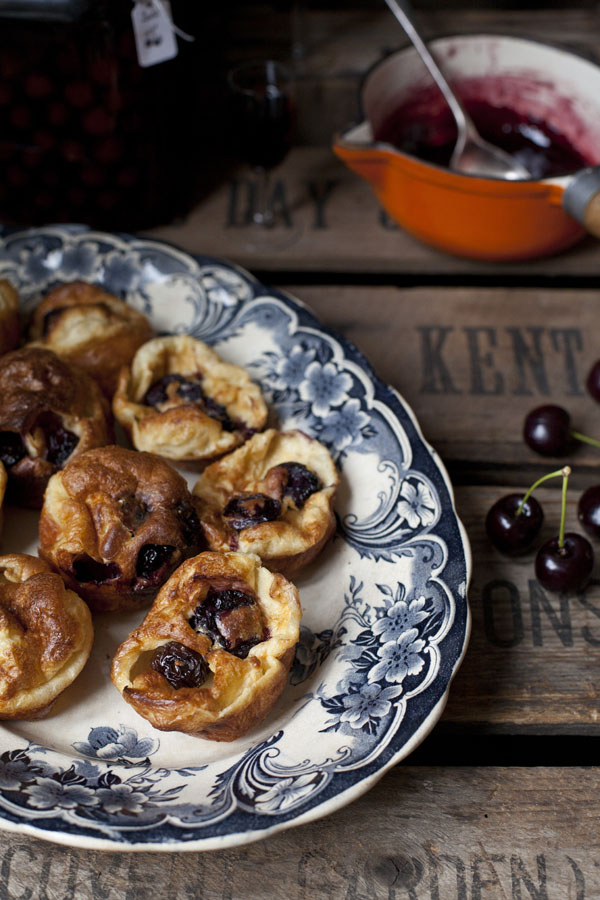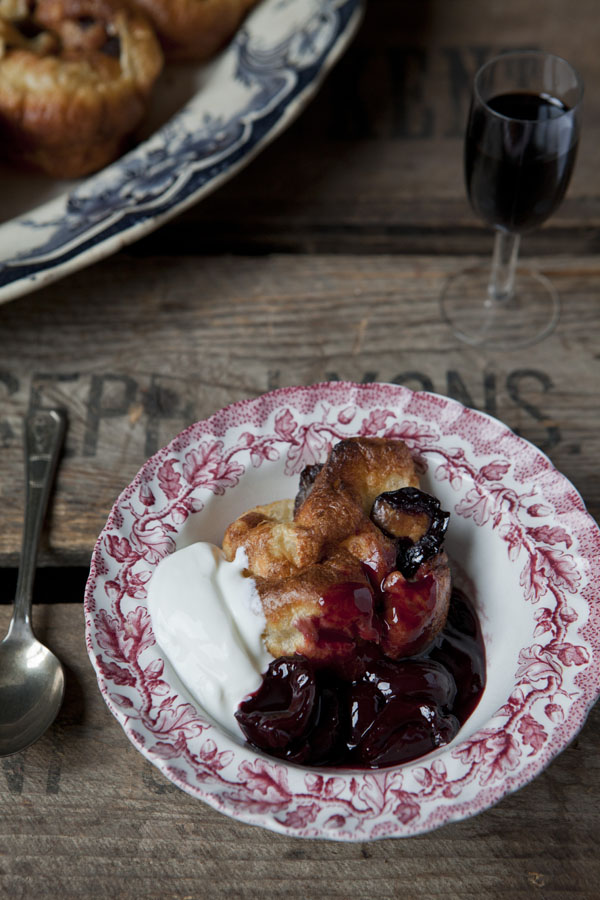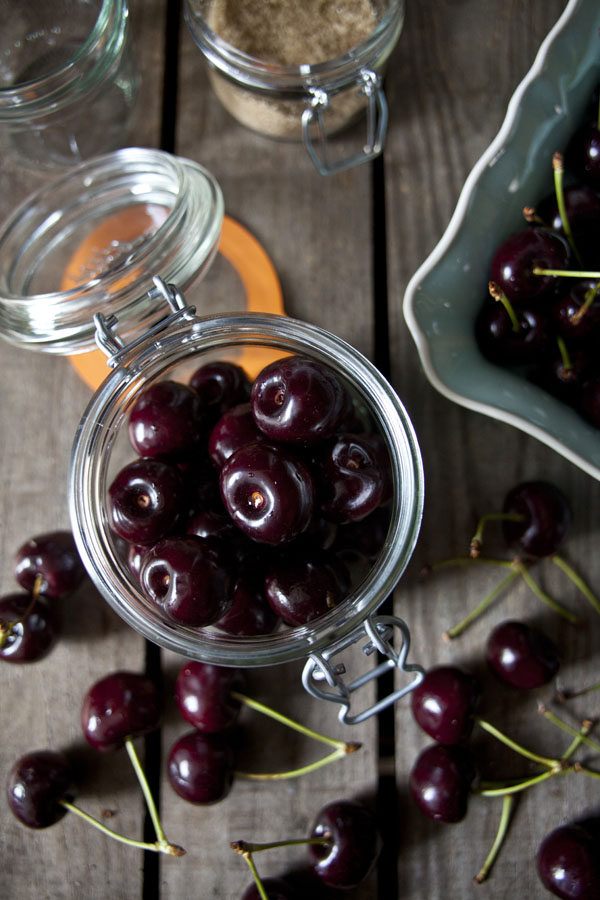The post Cherry brandy… the first step towards winter appeared first on Miss Foodwise.
]]>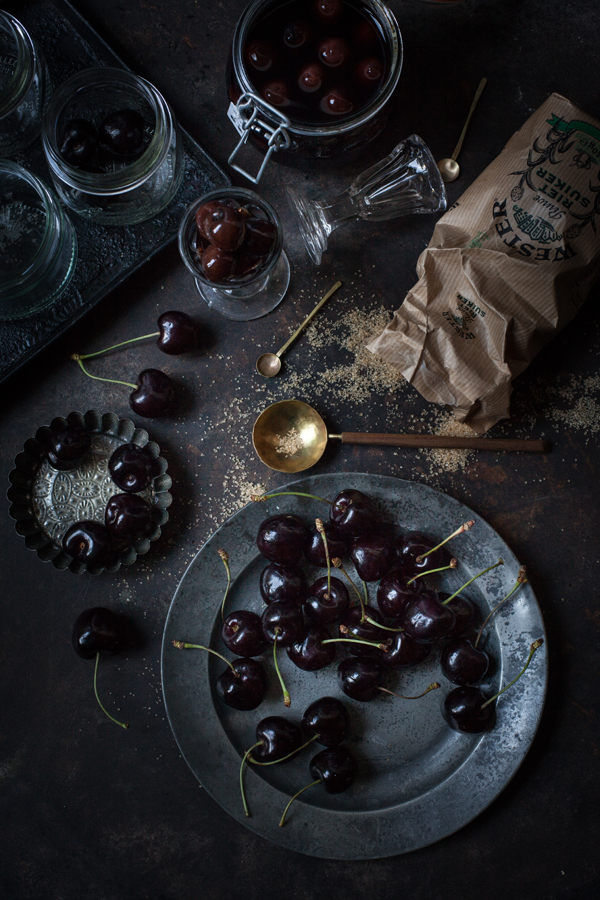 Preparing the cherry brandy or ‘Kriekenborrel’ as we called it in Belgium, is the first step towards Christmas and winter for me. On Christmas eve when I was a child, I was allowed one single drunken cherry in a small dainty glass as a treat. This is how memories are made, and how time and time again when Christmas comes, you need certain flavours to transport you back to the past. Nostalgia and Christmas go hand in hand. It is the one western tradition that is still going strong. People prepare things like this cherry brandy and plum pudding months in advance. The anticipation grows in the jars, and by every spoonful of brandy that is poured over the pudding every week.
Preparing the cherry brandy or ‘Kriekenborrel’ as we called it in Belgium, is the first step towards Christmas and winter for me. On Christmas eve when I was a child, I was allowed one single drunken cherry in a small dainty glass as a treat. This is how memories are made, and how time and time again when Christmas comes, you need certain flavours to transport you back to the past. Nostalgia and Christmas go hand in hand. It is the one western tradition that is still going strong. People prepare things like this cherry brandy and plum pudding months in advance. The anticipation grows in the jars, and by every spoonful of brandy that is poured over the pudding every week.Preserving fruit in ‘Jenever’ which is almost identical to Gin, has been a custom in our parts for many decades. It was particularly popular in the 1950’s when my grandmother was young. Because my mother grew up with it, it was sentimental to her, which is why she taught me how to make it. I still have the last jar of cherries my mum and I drowned in Eau de Vie in 1998. It is quite special, because the jar holds memories as well as cherries. In my kitchen I have jars from 2006, 2010, 2011 and 2013. Some I give away, ladling the cherries and booze out into smaller jars to decorate with a ribbon and the date. They go to people I know will appreciate my precious preserve. Because I part with memories of making them and hope they will be cherished.
My cherries of choice are dark English cherries from Kent. Their flesh is thick and eats like a plum, their juice is deep red like the liqueur it produces after months of ripening. The ones you see pictured here are of the ‘Regina’ variety and grown in Kent. It’s good to see Kentish cherries on the shelves of English supermarkets. This means that the farm will have a set income and that it is worth to harvest the fruit. Far too foo often fruit is left on the trees because harvesting would cost too much. And although I’m not a particularly big fan of supermarkets, not everyone lives near a farmshop or market where you can obtain these beauties and other produce grown on local soil.
In Belgium it is hard to find home grown cherries too, again the expense of harvesting and demand are too high. Most of our cherries come from Turkey. They are usually quite flavourless and dull. When I was a child, we had cherries from Belgium and France in our shops. One particular type, which we called white bellies, were my absolute favourite. They reminded me of the red blushing apple of snow white so I pretended they were tiny apples. You see them rarely these days which is a terrible shame. It is those wonders of your childhood you miss when you grow up. Fruit you got every season which is now only available rarely and at premium prices in premium stores. The farmers wife at my local farmshop tells me that when they go to the fruit and veg market early in the morning to buy the produce they do not grow (they are a dairy farm), they see less and less older farmers selling the more rare fruit like mirabelle plums, sloes and medlars.They harvest them from their farm hedges from trees much older then they are themselves. But as these older farmers retire, so is lost the supply of these most wonderful fruits. I appreciate the farmshop for buying the produce from these old men, that way it is still possible to see more of the season than just what the supermarkets wishes us to see.
What about the future of cherries and other home grown fruits? One of the fears of Brexit in Britain is that even less home grown fruit will be harvested. Most fruit pickers are immigrant workers because English (and Belgian people too for that matter) don’t want to do the hard work. So the question is, will there be an even further decline in home grown fruit? Well… Britain hasn’t left the EU yet and we can’t know now what will happen later. So lets just buy local when we can.
In the 19th century most fruit was picked by the poorest people in the cities. Just like with hop picking, families would move out of towns like London to spend the summer by the orchards. Although it was hard labour, being out of the city meant that the children had clean air and nature to run and play in before and after work. They saw it as a vacation, a working holiday. The money earned would go to the mother, men usually stayed in the towns to work, and the women would use the money to buy well needed items like new shoes and clothes for the children.
The past 50 years 90 % of the cherry orchards have disappeared. Before the second world war there were about 40 000 acres of cherry orchards in England alone. These were mainly in Kent, Worcestershire and Herefordshire.
The labour was very intensive as the trees were very high, too high to cover the crop from the birds. Cherry pickers would climb on very high ladders with baskets tied to their waists. Nowadays trees are kept smaller so they can be managed more easily and trey can be covered with netting to keep the birds from stealing or damaging the entire crop. When you drive through Kent at this time of the year, you can spot the netting. It looks like a giant spider has creeped out of that Harry Potter book to cover the trees in her enormous web.
To be able to enjoy cherries for longer, drowning them in strong alcohol really is the best way.
As true and loyal readers of my blog will know, I have featured a recipe for my family cherry brandy before. This one is quite the same, but using more readily available alcohol and more sugar so it keeps for longer. Traditionally this liqueur should be made with sour cherries, not sweet, but it works just fine with either.
A little news, I am organising two creative gatherings in the autumn. One will be a two day retreat in Tuscany the last weekend of october, the other is a one day in Dorset end of november. If you are interested, details will be shared in the next weeks but you can already email me to be put on the list without obligation. We will be cooking, photographing, styling, eating, drinking, learning and we will also have the most wonderful time with like-minded creatives.
On to the recipe now
What do you need
sour or sweet cherries: 1kg
A neurtal alcohol of minimum 35%
(vodka, jenever, gin, everclear, eau de vie,…)
raw cane sugar: 500 g
brown sugar or mollasse: 1 tablespoon
glass preserving jars
Method
Rinse the cherries well and pad dry with kitchen paper. Remove the stalks carefully without damaging the fruit.
Layer the cherries with the sugar, pour over the alcohol and close the jar.
Put in a dark place at room temperature – a cellar is perfect – and shake every day for a week
Forget about the cherries until christmas or thanksgiving!
Enjoy in a dainty glass or add them to your cake batter (don’t forget the kernels!). If you got some leftover from last year, toss on your ice cream. Also a treat baked into a batter pudding or clafoutis.
You might also enjoy
Cherry tart and prostitution >
The post Cherry brandy… the first step towards winter appeared first on Miss Foodwise.
]]>The post Cherry tart and prostitution appeared first on Miss Foodwise.
]]>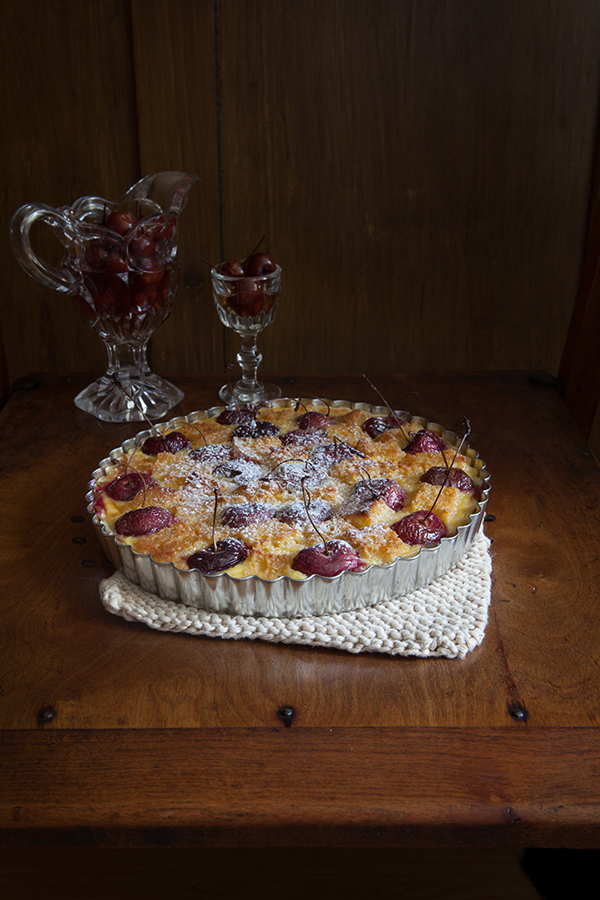
When I was a little girl my parents and I used to travel around Hungary in the summer. I can still remember the warm climate, and the little dresses I wore, many of which I have in a shoe box upstairs. What I also remember is the Bed and Breakfast, back then called ‘Zimmer frei’ in Hungary, which was run by an old couple. The woman looked a lot like my aunt and the man I can’t remember much. Their house was large for Hungary and by a main road, not far from a little restaurant by the river Danube where I always ate a very good omelette for supper.
Our time with the old couple was like staying with your grandparents, sure communication was complicated, they spoke a little German, so did my parents, and I as a four year old strangely enough spoke a good word of German too. They were loving people and love can be shown without the language barrier. Each day we entered our room, the old lady surprised us with a large stone bowl of the most plump cherries I have ever seen. As a child, and a picky eater, those cherries were some kind of heaven. Food I knew, and was so expensive at home that I could never really eat so many that my fingers would be stained in cherry juice.
And every day a bowl appeared, and every day we were greeted by the most loving smiles and gestures by these two wonderful people.
Two years after our last visit to the old couple’s Zimmer Frei we decided to do a detour and stay with them for a couple of nights. I requested it especially because I was eager to see my Hungarian grandparents as they had become to be for me. My parents too had never encountered such kindness and were eager to stay there again too.
So we drove to the rather large Hungarian house and as we parked the car I ran towards the door where the old lady – she must have been in her early seventies – was sitting in her chair.
But while I was running towards her the first thing I noticed was the anxious look in her eyes, and then the dress that she wore. As before she always wore granny clothes, now she was wearing a black embroidered dress with a deep decollete and very large earrings.
Anxious as she was, but really happy to see us, she told my parents that she would love it if we would stay but that she was no longer a Zimmer Frei since her husband had died the year before.
I wondered what the young girls were doing there if she wasn’t offering lodgings anymore, and somehow, while she was showing us to our room and I saw how the house had changed and lost all its granny appeal, I knew. I knew without without having the knowledge of years.
Heartbroken and realising that there might not be a bowl of cherries in our room each day, and hurt by the uncomfortable anxious look in my Hungarian grandma’s eyes we said we’d go for dinner and then come back to decide if we would stay.
The granny had tears in her eyes, and I felt like she was holding on to the summers and the bowls of cherries as much as I was doing. But those times were gone. The light had gone out in the rather large Hungarian house. It was replaced by sorrow, regret, and a need for survival.
So we ate an omelette at the restaurant by the river, and my parents gave me the choice on whether to stay at the granny’s house. Too young to understand what was happening at the house, but old enough to feel there was something wrong, I told them that I felt that it wasn’t right for us to stay there.
So we drove back to the granny’s house, and said our goodbyes, granny still trying to convince us we were so very welcome. But I was feeling so very sad. I could not understand what had happened and somehow I knew that by staying we would not only make her happy, we would also maker her very sad.
She had made her choice, and there would be no more bowls of cherries.
I hope she was at peace at the end of her life, so very long ago.
In her memory I have prepared this cherry tart, inspired by 18th century tarts, some of which you’ll find in my upcoming book. It’s a perfect tart to make when you have leftover sponge cake, that way you don’t need to bake a cake especially. The tart has a pleasant texture, though not like the tarts you are probably used to. Let me know if you’ve tried it!
x R
Cherry tart with curstard and sponge cake
What you need
Shortcrust pastry
- 180 g white flour
- 100g cold butter
- 20 g icing sugar
- tiny pinch salt
- 1 egg yolk
- 1 tbsp of cold water
Custard
- 250 ml cream
- 3 egg yolks
- a blade of mace
- a stick of cinnamon
- 1tbsp of raw cane sugar
Filling
- Sponge cake, preferably stale
- 2 tbsp of brandy (optional)
- a punnet of cherries
- 2 tbsp of unsalted butter – or bone marrow
- 22-24 sized pie pan or plate
The post Cherry tart and prostitution appeared first on Miss Foodwise.
]]>The post Kentish cherry batter pudding appeared first on Miss Foodwise.
]]>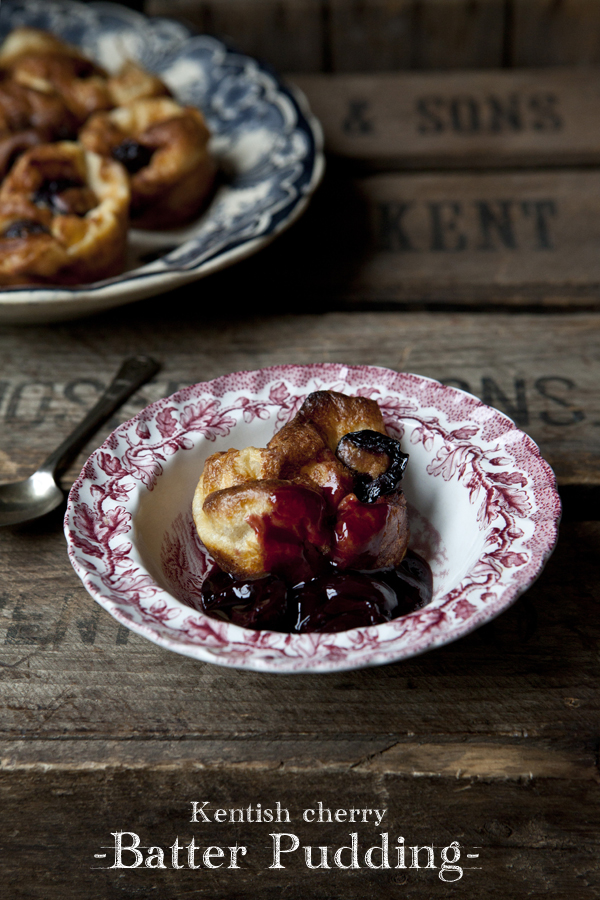
Batter puddings have been around for centuries. Originally they were named ‘dripping puddings’ because they were placed in trays underneath large spit-roasts to catch the dripping of the meat. In the 1747 book The Art of Cookery made Plain and Easy, Hannah Glasse renamed the dripping pudding to the now more generally known Yorkshire pudding.
‘Yorkies’ were provided to stretch the meat a little longer, soaked in gravy they are very child’s favourite and traditionally served as a filling dish before the main meat dish came to the table rather than accompanying it.
But batter puddings haven’t always been the perfect partner in crime to a good sunday roast, they have also been savored as a sweet treats as well. Mostly the rich puddings were just drizzled with a dusting of fine sugar but in the summer season and early autumn when there was a glut of fruit to use up, a sauce of cherries or plums would have been made to accompany the batter pudding.
Although there is no proof of age for the recipe of the Kentish cherry batter pudding, before the second world war there were about 40 000 acres of cherry orchards in Britain and most of them were situated in Kent. This does tell us that there were a lot of cherries about and not all of those cherries would have been exported to other parts of the country. Sadly only 90 percent of these orchards remain today but luckily the last few years Kentish cherries have seen a revival with new orchards being planted.
Cherry trees are kept much shorter now, making it easier to harvest. In the old days, mostly women would pick the cherries standing on high ladders with wicker baskets tied to their waists.
I reaslise this recipe comes at the very end of the cherry season, but you can also use the cherry brandy you have in your cupboard if you made some last year. Or like me if you made some every year for the past 5 years. I age them in years, only just opened up my 10 year old, after which I didn’t make any for 5 years. Some people who I like very much have received a tiny jar of those cherries so if you have, open the jar wisely.
This post also comes at the very end of the season because I have been so very busy, I already mentioned in my last my last post I’m writing a book but I’m also taking on an extra course in culinary school.
But on to the Kentish cherry batter pudding
What do you need
For the batter – makes 12 muffing size puddings
- 120 g plain or white spelt flour
- 2 large free-range eggs
- 240 ml full-fat milk
- a pinch of sea salt
- rapeseed, sunflower or lard for baking
For the cherry sauce
- 300g cherries
- 150 ml unsweetened apple juice or water
- 40 g raw cane sugar
- 2 teaspoons of cornstarch if you wish to thicken the sauce
Method
- Preheat your oven to 200° C
- To make the batter, sift the flour – very important here – and add the eggs, add the milk slowly while whisking the batter to create a mixture resembling a slightly thicker pancake batter.
- To make the cherry sauce, remove the stones from the cherries by halving them or use a fancy tool to get the stone out. Place in a small pan and bring to a simmer with the water or apple juice.
- Add the sugar and let it dissolve, simmer until you get a dark colored sauce. I like not to cook it too long so the cherries aren’t reduced to jam.
- If you like a thicker sauce add the cornstarch to packet instructions and when done put aside
- Place a generously greased muffin tin in the preheated oven.
- When the oil is hot, be quick as it should stay hot. Get the tin out of the oven safely, don’t spill the hot grease!
- Scoop batter into each muffing shape and then add a cherry or two from your braised cherries, or from your cherry brandy.
- Place into the oven and don’t touch the oven door until the batter puddings have risen and are golden brown, this should be about 25-30 minutes.
- Serve with some of the braised cherries, a spoonful of clotted cream or strained yoghurt (Greek style)
Tip: Just use leftover Yorkshire puds if you have them, and also these puds freeze well!
I’ll share with you which beer I would have with this pudding, to stay in the cherry mood: a traditional Belgian sour cherry beer, not a sweet one like the more commercial brands. A sour one which has a hint of the kernels and vanilla like a Liefmans Kriek, or a provision beer like a Liefmans Goudenband. For more international beers I think a sweet ans mooth porter would do the trick. Or, if you have cherry brandy, a little glass of cherry brandy of course!
Enjoy!
You might also like
Cherry and almond cake
Cherry brandy
The post Kentish cherry batter pudding appeared first on Miss Foodwise.
]]>